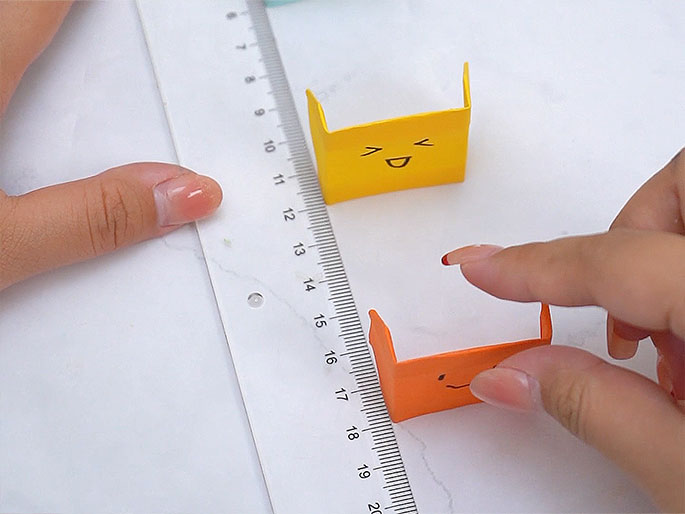Paper Dominoes
Stem Activities

Ages: 6-8

Less than 30 minutes

Grownup needed
Can paper pieces fall like domino tiles? Yes, they can! But first, you'll need to make them stand up! Arrange folded paper pieces at specific intervals, then knock down the first one to watch them roll like waves! This experiment helps you understand 'chain reactions' - just like real domino tiles, where one small action can trigger a series of changes!
Materials Needed
- Origami paper
- Marker pens
- Ruler
Step-by-step tutorial
Take a piece of origami paper and fold it in half.
Unfold the paper, then fold both top and bottom sides along the centre crease.
Unfold the bottom of the paper and fold both corners along the crease as shown.
Fold the bottom edge along the crease.
Next, fold the top corners towards the centre line as shown.
Fold the top edge along the centre line.
Finally, as shown, make guide lines at the peaks of the two small triangles and fold the paper accordingly. Repeat this folding process to create 5-7 paper pieces.
Turn over the folded paper pieces and draw faces on them with markers. Note: place the thicker folded edge facing upwards.
Arrange the paper pieces with 6cm gaps between each piece. Note: this spacing is crucial for success!

Push the first paper piece in line - did your paper dominoes work?


 STEM Activities
STEM Activities Artistic Adventures
Artistic Adventures Playful Learning
Playful Learning The Recipe Repository
The Recipe Repository  Nature Explorations
Nature Explorations












